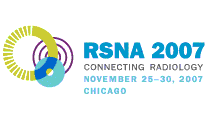
Abstract Archives of the RSNA, 2007
Hilary Margaret Dobson MD, Presenter: Nothing to Disclose
1. To optimise the technique of conventional film-screen mammography.
2. To discuss the mammographic manifestations of normal breast anatomy.
3. To offer a strategy for mammographic interpretation.
4. To summarise the contribution of mammography to the triple assessment process of diagnostic breast imaging.
5. To discuss the additional benefit of digital mammography, particularly with regard to the dense breast.
6. To discuss the use of mammography in population screening for breast cancer.
The technique of conventional film-screen mammography has an unrivalled research base. As with any diagnostic technique, the aim should be to maximise both sensitivity and specificity and this is achieved in mammography by demanding the highest possible radiographic standards, namely, meticulous technique by trained staff using equipment functioning optimally and case selection by the appropriate use of evidence based clinical guidelines. The Royal College of Radiologists guidance, embodied in Making The Best Use Of Radiology (Version 6) underpins case selection in U.K.
A strategic approach to mammographic interpretation will be suggested emphasising practical issues of viewing technique and the mammographic manifestations of normal breast anatomy.
Background breast patterns will be discussed and the BiRads and Tabar classifications will be demonstrated. The importance of the so called forbidden zones, as discussed by Tabar, namely, milky way, retroareolar area, no-mans land and medial half of the breast will be emphasised.
Diagnostic workup algorithms will be offered with regard to the main mammographic features i.e. mass (ill defined/benign), calcification (castings/non-casting), parenchymal distortion and asymmetric density. Mammography within the context of triple assessment will be emphasised at all opportunities.
Learning from the Swedish Two County data, evidence of the benefit of mammographic screening in the down-staging of breast cancer will be discussed and data presented from the UK NHS Breast Screening Programme (NHSBSP). Emphasis on the identification, and in particular the mammographic manifestation of small (<15mm) grade 3 invasive ductal tumours will be presented.
The higher sensitivities being achieved by full-field digital mammography will be discussed on the basis of published data from Oslo and the DMIST study.
Dobson, H,
Mammography. Radiological Society of North America 2007 Scientific Assembly and Annual Meeting, November 25 - November 30, 2007 ,Chicago IL.
http://archive.rsna.org/2007/5000684.html

